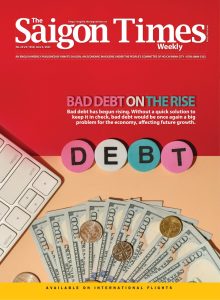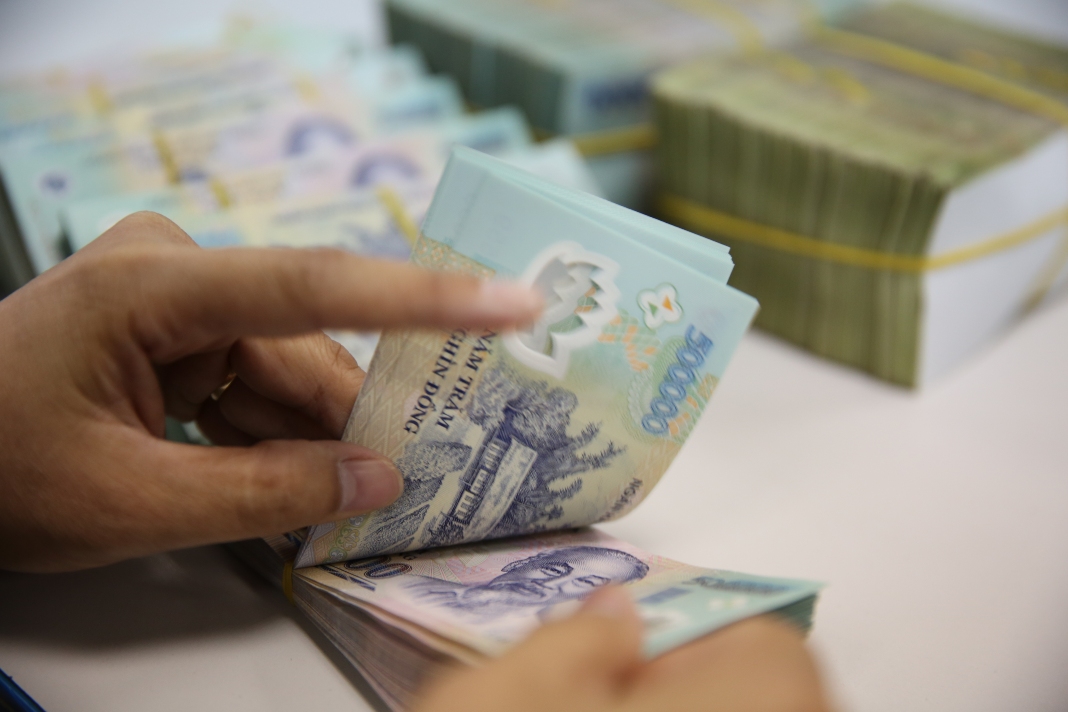Bad debt has begun rising. Without a quick solution to keep it in check, bad debt would be once again a big problem for the economy, affecting future growth.
VND600 trillion worth of bad debt
Seven banks have let their bad debt ratio on the balance sheet exceed 3%, out of the 28 lenders that have released their financial statements for the first quarter of this year, including large- and medium-sized ones. Also, the total bad debt at these 28 banks have grown over 23% against the end of 2022, amounting to more than VND172 trillion.
The fact that bad debt tends to go up is one thing in common when coming to banking operations in the first three months of 2023, when only three lenders managed to reduce the volume of their non-performing loans compared to the beginning of the year, i.e. the remaining 25 witnessed their credit quality deteriorate.
Figures recently published by the regulatory agency have helped put together the general picture of the industry. According to the State Bank of Vietnam (SBV), the ratio of bad debt on the balance sheet of the whole system as of the end of this February had risen to 2.91% versus 2% in late 2022. This number is almost twice as high as that in late 2021. Notably, the gross amount of bad debt (including those non-performing loans on the balance sheet, those already sold to VAMC but without any settlement yet and those potential as bad debt of the system of credit institutions) was estimated at 5% of the total outstanding loans at the end of February 2023.
Since the total outstanding loans in the economy were more than VND12 million billion as of late this February, the absolute value of bad debt on the balance sheet should be nearly VND350 trillion, a surge of more than VND111 trillion against the end of 2022, equivalent to a rate of 47%. This is the fastest growth rate in recent years. Meanwhile, when it comes to gross bad debt as per the above statistical criteria, the figure would be over VND600 trillion. As the total outstanding loans of the banking industry increased by nearly VND92 trillion in the first two months of this year and by a net value of more than VND362 trillion as of the end of April, it is obvious how intense the pressure is with the figure of bad debt picking up.
Meanwhile, Decision 689/QD-TTg of the Prime Minister dated June 8, 2022, which gave approval for the project “Restructuring the system of credit institutions associated with bad debt settlement in the 2021-2025 period”, has set out the following goals: accelerate bad debt settlement, improve credit quality, prevent and minimize the size of new irrecoverable debts, strive to keep the ratio of bad debt on the balance sheet of the banking system, that which has not been handled by VAMC and potential bad debt at less than 3% by the end of 2025. Thus, in the next two years, bad debt settlement will remain a challenging central task of the banking industry.
Probably, in the past three months, bad debt has further built up in the context of slower economic growth, more dreadful production and business conditions, and the operations of businesses still mired in trouble. This suggests the trend of soaring bad debt seems to have only begun. Therefore, without a quick solution to keep it in check, bad debt would be once again a big problem for the economy, affecting future growth.
Bad debt settlement:
Old plus new
The pandemic broke out three years ago but its effects have continued to linger. Despite a new normal, the resources businesses have been drawing on have almost been depleted. Meanwhile, quite a few sectors keep running into difficulties with the consumption of their products, considering how the volume of orders keeps shrinking, the purse strings are tightened in both domestic and international markets, and the access to new sources of funding is limited by high interest rates and risk aversion.
As a result, even though they have survived those more than two years during the peak of the pandemic and overcome the extensive period of social distancing, many members of the business community are now on the verge of collapse. For this reason, their ability of debt repayment has also worsened. As per data from the General Statistics Office, an average of 19,200 companies bid farewell to the market every month in the first four months of this year, which is the picture that best depicts the current stressful situation.
Some enterprises have initially recovered their production and business, but they still cannot clear up all the problems yet, with their resources barely enough to hang on and their debts which have been restructured plus those already due unlikely to be paid off. Meanwhile, the policy of rescheduling debt repayment, granting fee exemption and reduction, and keeping debt groups unchanged for those customers badly hit by the Covid-19 pandemic according to Circular 14/2021/TT-NHNN already expired in late June 2022.
The new bad debt plus the restructured debts that turned bad upon the end of the restructuring period, coupled with the little progress in the settlement of old bad debt, have exerted considerable pressure on the operations of banks. The rapid rises in lending rates from the end of 2022 to the first quarter of 2023 dealt a hard blow to the real estate market, making it no longer easy for banks to handle the land and buildings used as collateral, especially for those massive debts that need to be put on sale at market price.
In need of integrated solutions
Given that bad debt is impacting the banking system in particular and the economy as a whole, the SBV has recently revised down interest rates. Along with that, Circular 02/2023/TT-NHNN has been promulgated, enabling local banks and foreign bank branches to restructure debt repayment and keep debt groups unchanged to support those customers with difficulties in their production and business activities and those individuals having a hard time paying off the loans they took out for consumption and other daily activities.
Apparently, Circular 02/2023 is a necessary successor and an extension to Circular 14/2021, whose effect already came to an end in mid-2022. Besides, in preparation for the expiry of Resolution 42 of the National Assembly on bad debt settlement on December 31, 2023, which will probably give rise to legal loopholes, the central bank has added a chapter on the handling of bad debt and collateral in the draft of the amended Law on Credit Institutions and is now collecting feedback.
 Analysts comment that there should be a legal framework to develop the bad debt trading market as soon as possible, since no bad debt transactions in Vietnam have ever been conducted via the market, but mainly via the balance sheet between banks and VAMC. Darryl Dong, principal financial specialist at IFC, has remarked that Vietnam remains at the starting line when coming to the opening of the bad debt trading market, as the debt market is not really open for investors to get engaged.
Analysts comment that there should be a legal framework to develop the bad debt trading market as soon as possible, since no bad debt transactions in Vietnam have ever been conducted via the market, but mainly via the balance sheet between banks and VAMC. Darryl Dong, principal financial specialist at IFC, has remarked that Vietnam remains at the starting line when coming to the opening of the bad debt trading market, as the debt market is not really open for investors to get engaged.
For their part, banks are once again looking to enlarge their charter capital, by paying stock dividends from what financially remains after provisioning for the 2022-2023 period, in order to enhance their financial capacity and provision for risks given the possibility of bad debt shooting up in the coming time. Banks are also trying their best to make provision for credit risks to create a more secure buffer to take on the bad debt challenge.
Last but not least, expansionary monetary and fiscal policies are considered essential to soon bring the economy back on track to strong growth again, which in turn will give birth to a more attractive business and investment environment, revive all markets, help the business community recover faster and make the job market more upbeat. Then, the debt repayment ability of corporate and individual customers will be improved, making it possible to resolve the problem of bad debt more easily and quickly.











